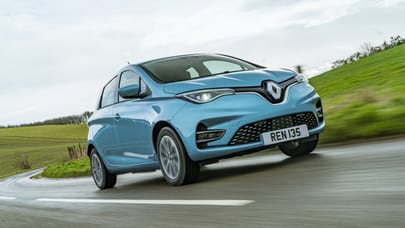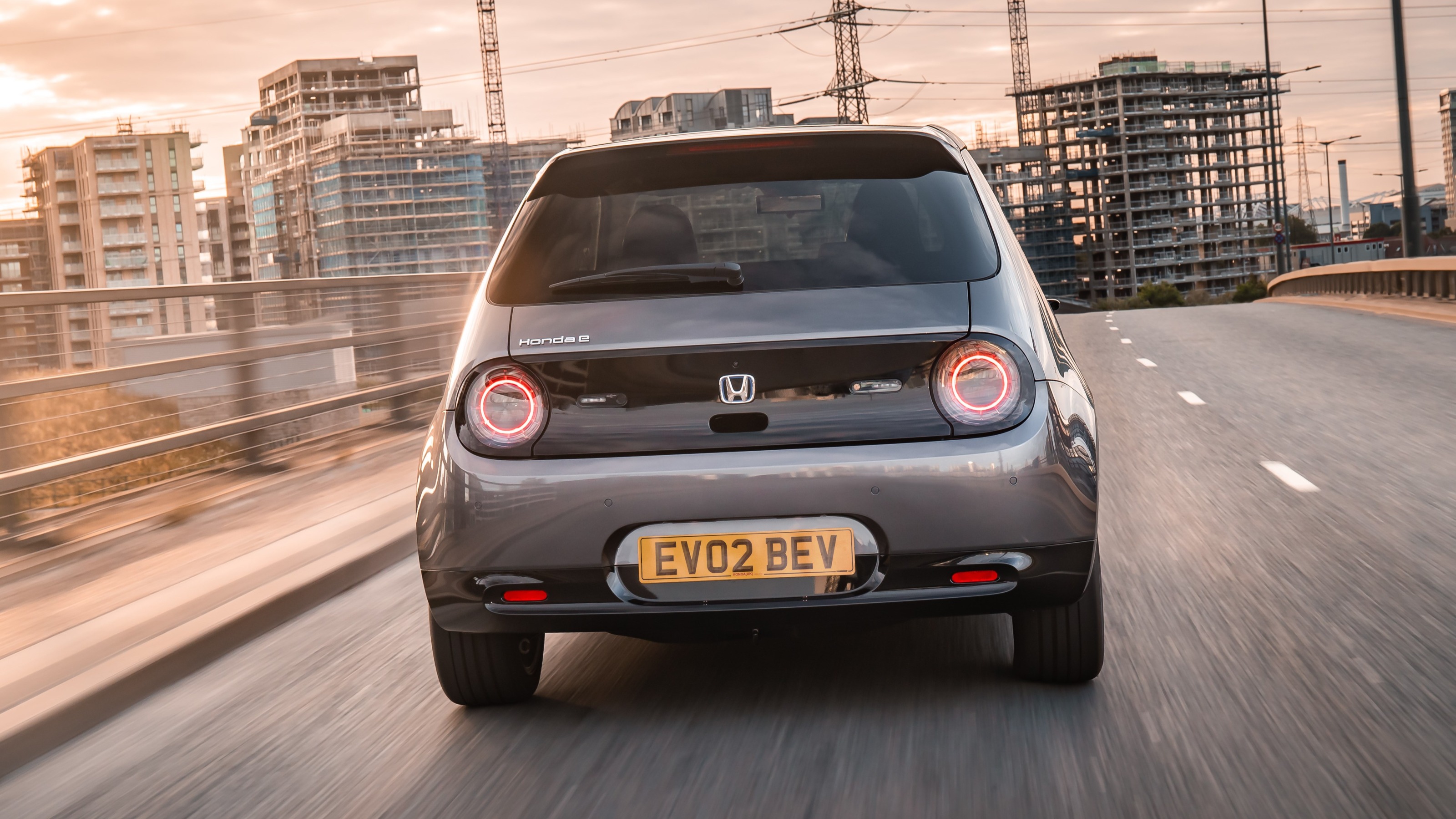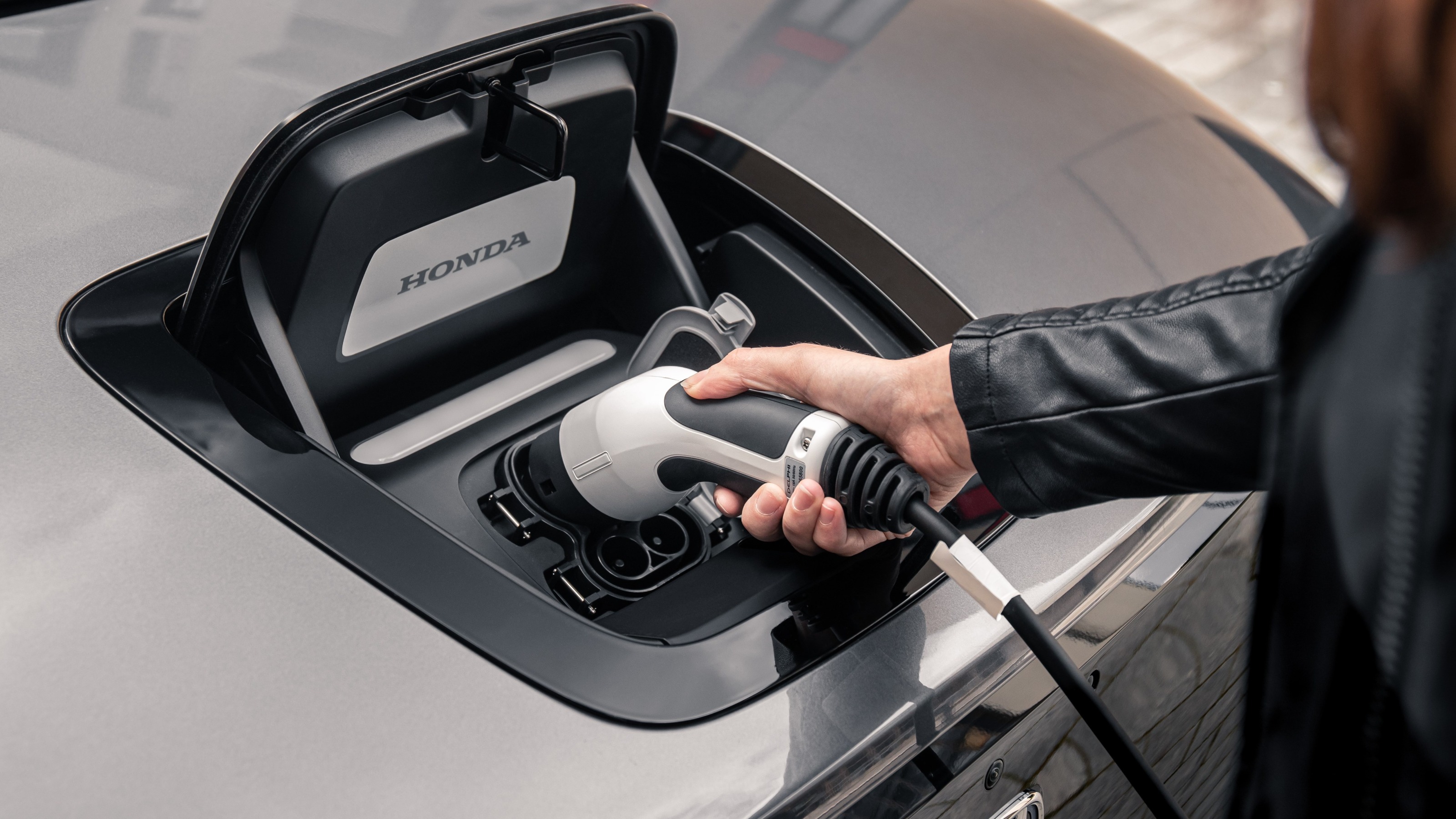
Good stuff
A dash like no other, irresistible looks, tidy handling
Bad stuff
Not cheap, limited range, small boot
Overview
What is it?
It’s the Urban EV Concept that became a legend, the legend that became a prototype and the prototype that became the dinkiest, most desirable car since the Suzuki Jimny. It’s the Honda e, Honda’s first mass-market, pure-electric car (yes, Honda dabbled with the EV Plus in 1997, but only around 350 of those were ever built), and we want one.
Splendid. Paint me a picture.
Honda clearly isn’t going Tesla chasing with this one, the dimensions are Fiat 500-plus-a-bit, wider than a Jazz but actually narrower when you take into account it has no wing mirrors. This is very much an urban runaround. A range of 137-miles means you won’t want to stray too far from town, but a choice of 134bhp and 152bhp versions, both with decent performance especially up to 30mph, a chassis that’s been shown some of Honda’s handling love and a configurable driving experience mean it’s not out of its depth if you fancy a ‘proper’ drive… and have the battery to spare.
It doesn't look like a bargain bin EV. Is it?
Cheap the Honda e is not. While Honda has kept the dimensions in check and battery to a compact 35.5kWh, the price starts at a notably juicy £26,160 for the base car, rising to £28,660 for the higher-powered, higher-spec Advance model. And those both include the £3,500 government grant. So, to justify prices that eclipse the much larger VW ID3, Honda hasn’t held back with the technology.
Let me guess, autonomous driving and laser beams?
If only. As standard you get cameras for wing mirrors and the rear view mirror, 100kw DC rapid charging capability in 30 mins, an app to pre-condition the car and babysit it while it charges, many crash avoidance systems (including auto braking, adaptive cruise, lane keep assist, auto high-beam headlights) and several acres of screen. And all this wrapped in a subtly retro colour and material pallet designed to chime with the cheeky exterior – available in white, black, grey, blue and highlighter yellow paint.
The Honda e arrives riding a wave of new small, affordable EVs, at last broadening the choice beyond the longer-range, but more premium and pricey stuff like Teslas, the Jaguar I-Pace and Audi e-tron. Honda is up against the new Peugeot e-208 (and its sister car the Corsa-e), the Mini Electric, Fiat 500 Electric and the Renault Zoe and banking on customers seeing past its chunky price and skinny range, and buying with their hearts not their heads.
Want to know what the best electric cars are? Click here for the top 20
What's the verdict?
Far be it for Top Gear not to recommend the most powerful model available, but here we’d be inclined to go for the entry level car. Not only are the performance gains negligible, but so much of the kit – the interior screens, the wing mirrors, the seat trim – is standard that we’d save the £2.5k, do without the rear-view display, parking assist (honestly, how crap is your parking if you can’t safely navigate a car this size into a gap?) and sound system upgrade.
Whichever version you pick, the Honda e has two rather glaring drawbacks – the limited range and chunky price tag. Honda is rolling the dice here, that customers will get what I’m going to call ‘Suzuki Jimny Syndrome’ and fall so deeply in love with the car that they’ll see past its pitfalls. In fairness, Honda isn’t shying away from the 137-mile range – calling it a conscious decision to spend money on the tech and only fitting it with a battery suited to a car of this size. As one engineer eloquently put it: “If you want to make an iPhone, why would you design an iPad just to get a bigger battery in there?”
Truth is, we all want greater range from our EVs but let’s be realistic, do we need it? Would we rather pay the same money for a car that’s less exciting, less well equipped, but with another 50 miles of range? No, I probably wouldn’t. It’s an urban car, you need to plan to use it as such, and if you did need to get somewhere 300 miles away in a hurry then you either need to rent something suitable or treat that journey like the anomaly it is and plan a two stop rapid-charge strategy.
The Rivals

Trending this week
- Car Review
BMW iX3






